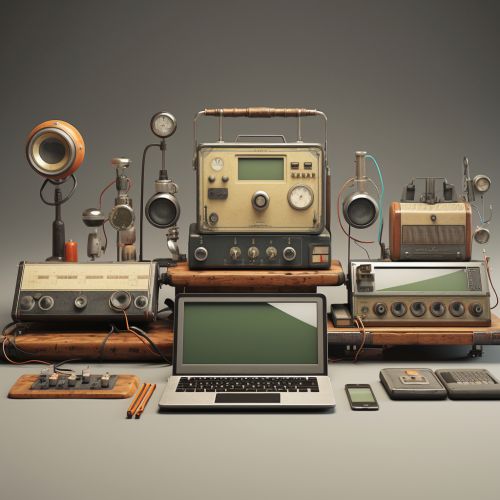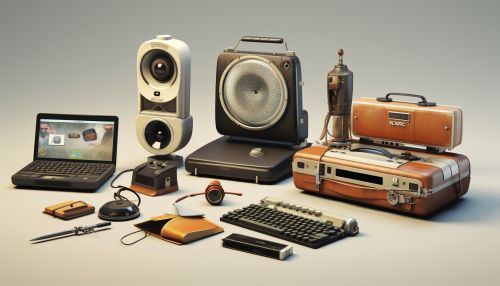Portable electronics
Introduction
Portable electronics, also known as portable devices, are small, lightweight, and mobile electronic devices that run on batteries. These devices have revolutionized the way we communicate, entertain, and work in the 21st century.
History
The history of portable electronics dates back to the late 19th century with the invention of the transistor. This small electronic component was a game-changer in the electronics industry, paving the way for the development of smaller and more efficient electronic devices.


Types of Portable Electronics
There are several types of portable electronics, each with its own specific uses and features.
Mobile Phones
Mobile phones, also known as cell phones, are one of the most common types of portable electronics. They allow users to make calls, send text messages, browse the internet, and use various applications.
Laptops
Laptops are portable personal computers that are small enough to fit on a user's lap. They are equipped with a keyboard, a display screen, and a trackpad or mouse for input.
Tablets
Tablets are flat, touch-screen devices that are larger than mobile phones but smaller than laptops. They are primarily used for media consumption, web browsing, and gaming.
Portable Media Players
Portable media players are devices that allow users to listen to music, watch videos, and view photos on the go. They often have storage capabilities for media files.
E-Readers
E-readers are devices designed specifically for reading digital e-books. They often have e-ink screens that mimic the appearance of printed paper.
Technology and Components
Portable electronics are made up of several key components that allow them to function.
Batteries
Batteries are the primary power source for portable electronics. They store electrical energy and provide power to the device when it's not connected to an external power source.
Displays
The display is the component that presents visual information to the user. It can be a liquid crystal display (LCD), light-emitting diode (LED), or organic light-emitting diode (OLED) screen.
Processors
The processor, also known as the central processing unit (CPU), is the brain of the device. It executes instructions and processes data.
Memory
Memory is a critical component of portable electronics. It stores data and instructions for the processor. There are two types of memory: random access memory (RAM) and read-only memory (ROM).
Input and Output Devices
Input and output devices allow the user to interact with the device. Input devices include keyboards, touch screens, and buttons, while output devices include speakers and headphone jacks.
Impact on Society
Portable electronics have had a profound impact on society. They have changed the way we communicate, work, learn, and entertain ourselves. They have also raised concerns about privacy, security, and health.
Future of Portable Electronics
The future of portable electronics is promising, with advancements in technology leading to more powerful, efficient, and versatile devices. Developments in areas such as artificial intelligence, augmented reality, and Internet of Things are expected to further revolutionize the field.
